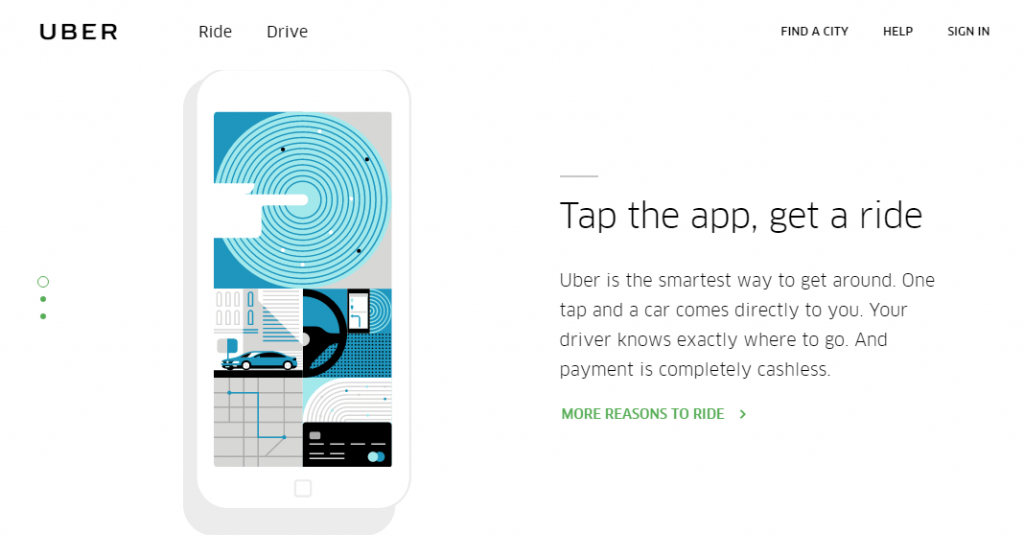Businesses are expected to be pragmatic, self-centered entities that should only look for profits. But in the coming years, the wheat will be separated from the chaff. Businesses that are driven by profits alone will fail. In contrast, businesses that create value for customers throughout their journey will win the race.
Modern customers are no longer content with a product that works and comes at a reasonable price. They don’t wish to settle for less and want some additional value while making their purchase decisions.
Right from ease of delivery to a well-rewarding loyalty program – it could be anything that creates value for customers and makes them choose you over thousands of alternative brands.
But with such a wide and diverse audience, how do you identify and meet customer value expectations?
Well, don’t worry as we are here to answer all your questions. In this blog, we’ll go over the various benefits of customer value, and understand the role of customer support software in asking customers what value means to them. We will also explore some strategies on how to create value for customers.
Yes, there is a lot to cover. So let’s dive right in!
What Is Customer Value?
Customer value refers to the worth of a product or service in the eyes of your customers. In other words, it is the satisfaction a customer experiences with your product in relation to its price. When you offer high customer value, customers are bound to choose your brand over other competitors present in the market.
Customers are constantly comparing products based on the value they offer them. For example, while one customer might find great functional value in a smartwatch, others might perceive more psychological value in an antique watch that was owned by a special someone.
Now, that we have read the definition of customer value, let us explore the concept further with the help of an example:
Imagine you run a cake shop at a street corner. You bake pineapple pies and price them at $2/piece. Customers visit your shop, try the pastry but hardly repurchase it. What can be the reason? Customers did not get the actual value that they had perceived before buying the pie.
After witnessing this, you price the same pastries at $1/piece. Now, you see more and more customers repeatedly buying the pie as they feel it is an excellent buy at that price.
Why Is Customer Value Important?
There are multiple reasons to build customer value, but a few stand out. Let us discuss them in detail:
Meet customer needs and expectations: No matter if you run a small mom-and-pop shop or a multinational firm, you need to understand what appeals to your customers. According to Microsoft, 54% of customers have higher expectations today compared to just one year ago. By exploring the customer value concept, you can identify what benefits customers want and meet their expectations accordingly.
Customer value helps you retain customers: If customers see real value in your products or services, they are bound to return to your business. Just a 5% increase in customer retention can lead to a 25% to 95% increase in profits. In addition to this, such customers become brand advocates and market your brand to their friends and family. This can significantly reduce your marketing team’s efforts and attract more customers to your business.
Improve and align your marketing communications: A clear understanding of what customers want can help you improve your marketing communications. Whether you create an image for a small social media post or design the new billboard advertisement, you will know exactly which product/service benefits to highlight. Over the course of time, this will help you reap the maximum return on investment from your marketing efforts.
Customer value can create a sense of urgency: Customer value creates a sense of urgency, as the various benefits and perks associated with a product are time-limited. We all know how urgency can push customers to action and increase your sales. In fact, according to a study, placing a simple countdown timer (showing time left for next-day delivery) can increase online sales by up to 9%. Therefore, by providing limited period offers or perks, you can enhance the value of your product and persuade customers to make a purchase quickly.
How to Decide Where You Can Add Customer Values
Adding value to your business offerings takes thorough research. However, before you even begin to find the right answers, you need to identify the right questions first.
What values does your business already provide?
If your business offers a product or service that has customers, you are already offering some value to them. As a first step, you need the outline “the why” of your product or service. Why do customers buy from your brand? Why do they choose you over your competitors? This value proposition list will prove to be handy while creating the right strategies.
What values do customers expect from brands in your industry?
We all know that customer expectations are on the rise. Therefore, you need to identify the customer value expectations that are prevailing in your industry. Do customers expect benefits such as heavy discounts, free shipping, etc.? Do customers feel attracted to lower prices more than any other benefits? The answers to such questions will help you understand the types of values customers really want.
What values are offered by your close competitors?
No matter which industry you operate in, there are chances that you have at least a couple of close competitors. Visit their website, social media pages, brochures, product catalogs, etc., and see what values they are offering to customers. Also, note the sequence of the product or service values, especially the ones that are highlighted.
How to Create Value for Customers That Lasts
In addition to having a killer product, there are a lot of factors you need to consider for a holistic customer experience. Here are 7 strategies to create long-lasting customer value:
1. Revisit Your Brand’s Value Proposition
Your brand’s value proposition separates you from hundreds of business rivals present in the market. A value proposition tells your audience why they should buy from you and what benefits they can expect.
However, the sad reality is that most businesses fail to communicate the right value proposition in their marketing campaigns. Instead, all their efforts get buried in meaningless slogans or trendy buzzwords.
So how do you write a value proposition that’s strong enough to capture attention and lift sales? You need to identify all the benefits your product offers and connect them to your buyer’s problems. Let’s see how Uber is leading in customer value marketing:
We all know how finding a cab can be a tormenting experience, especially when you have to call the cab owner or, worse, physically find an unoccupied cab. Uber, in its minimal yet effective message, communicates how it solves this major problem. User users can simply tap their app to book a ride, commute to any place, and enjoy cashless transactions.
2. Reward Customers With a Loyalty Program
How do you value customers, especially those who have stuck with your businesses during the various ups and downs?
Loyalty programs are a great way to appreciate your loyal customer base and show new customers or prospects what they can gain by consistently buying from your brand.
According to an Accenture study, more than 90% of companies offer some sort of loyalty program, and in the US alone, there are 3.3 billion loyalty memberships.
Let’s take the example of Sephora and see how it rewards its loyal customers:
Sephora, a beauty and cosmetics brand, started the “Beauty Insider Program” that lets customers earn points on all their merchandise purchases and redeem those points for rewards. In addition, customers can enjoy deluxe product samples, product bundles, or experiences in exchange for their points.
Taking good care of your loyal customers can lead to magical results. The Sephora loyalty program has over 17 million members in North America alone. These program members are responsible for 80% of the brand’s total sales.
3. Engage Your Audience With Relevant Content
Your brand’s content strategy should not be just about yourself. To create value for customers, you need to produce meaningful content for your customer base – the content they actually need and which helps them grow.
To educate your customers, you can share how-to guides, tutorials, or host webinars depending upon the topic. You can even publish brand-specific articles (product information and features) that teach users on making the most of your product or services. This will help your brand foster a learning community that engages with your brand to get something more than what you sell.
Let’s see how General Electric keeps audiences engaged with valuable content:
General Electric is a multinational technology company that is known for its robust content strategy. The content shared on their website and across different social media platforms makes science fun and entertaining topic. For instance, being a leader in renewable energy, GE has brought the focus of people on climate change by sharing insightful infographics, short videos, and more.
4. Segment Your Customers Into Meaningful Groups
Rather than assuming what generally appeals to your audience, you need to dig deeper. Segment your audience into multiple groups and see how you can bring value to them.
You can segment your audience based on the following groups:
- Demographic Segmentation (Age, gender, occupation, income, etc.)
- Psychographic Segmentation (Personality, values, interests, etc.)
- Geographic Segmentation (City, state, country, coastal area, etc.)
- Behavioral Segmentation (Tendencies, product use, frequency of Purchases, etc.)
Customer segmentation is important because different customer groups might be attracted to different things. For example, what an adult considers as “valuable” can be completely different from that of a teenager. While adults might be attracted to lower prices or long-term benefits, teenagers might see more value in a brand that is commonly used as a status symbol.
In addition to this, when you segment your customers into different groups, you can gain a more holistic view of their needs as well as challenges.
Read More: The Ultimate Guide to Customer Segmentation
5. Go Beyond Just a Competitive Price
Successful brands are sensitive about their price, but they do not compete solely on that. If you offer more value to your customers even at a higher price, customers will save up to buy from you.
For example, who can forget the time when Apple launched iPhone in 2007? They created something so spectacular that people were not expecting – a phone with GPS, an internet browser, and other features.
Given the changing brand perception of people, competing on just price has become less attractive. Here are some top strategies (other than price) for creating value for customers:
Brand partnerships: You can partner with other brands that complement what you sell. This way you can get the valuable attention of your partner’s audience. For example, both Uber and Spotify partnered with each other to grow their users and deliver value to customers. The idea is simple – instead of hopelessly waiting after booking a cab, customers can listen to their favorite music and create playlists.
Discounts and Offers: Product discounts and offers are great ways to keep customers hooked to your brand and encourage them to buy more. You can look to offer discounts to your high-spending customers or to everyone during seasonal sales. Additional offers such as free delivery, premium support, etc., can also make a huge difference in your customers’ lives.
Free Trials: How would people know the value your products or services bring to the table if they never get to try them? You can offer free trials to your customers to give them a glimpse of your offerings. For example, if you are a SaaS business, you can offer a 15 or 30-day free trial to users and increase your chances of getting more paying customers.
6. Directly Ask Customers What “Value” Means to Them
To get closer to the answer to “what do customers value?”, you need to ask them directly. With the help of regular customer feedback, you can understand what customers perceive as value and how their ‘value needs’ change over time.
You can share surveys with your audience and allow them to give their candid feedback. For instance, with NPS surveys, you can see whether customers find your brand offerings valuable enough to recommend them to their friends or family members.
Here are some more questions that will help you decode your customer’s purchase behavior:
- What makes you choose our brand over our competitors?
- What challenges can our product (or service) help you solve?
- How happy are you with the pricing of our product?
- List customer perks (discounts, offers, tutorials, etc.) from most to least important
- What can we do to bring more value to your journey with our brand?
Sharing such well-planned surveys from time to time will make you a brand that truly cares about its customers. Remember to include open-ended questions as they allow people to express themselves freely and reveal unexpected insights.
Read More: Unravel the Ideal Question Types for Your Surveys
7. Keep an Eye on Emerging Customer Value Trends
What your customers value today may not be relevant tomorrow. To keep up with the ever-changing trends, you need to observe customer behavior and the world around you.
Customer value trends keep emerging every year. For example, according to research, modern customers are willing to pay more for food products that are labeled as “all-natural”.
The COVID-19 pandemic has also had a drastic impact on how customers engage with brands. According to Forbes, In 2020, 40.3% of customers visited physical locations significantly less frequently because of Covid-19.
Therefore, if your business wants to succeed in the post-pandemic era, you need to explore online retail channels. Providing a search-friendly online website, free shipping, easy returns, exchanges, etc., will help you create long-lasting customer value.
Less Effort, More Customer Value
By consistently creating customer value, your business can build long-term relationships with existing customers and encourage repeat purchases. However, you need to be patient as creating value requires time, research, and a thorough understanding of what your customers want.
So how do you create more customer value with less effort?
To create value for your customers, revisit and communicate your value proposition, reward customers with loyalty programs, generate relevant content and offer personalized discounts and offers. Most importantly, do not hesitate to directly ask your customers about what features or other value drivers they would like to see your brand offer.











